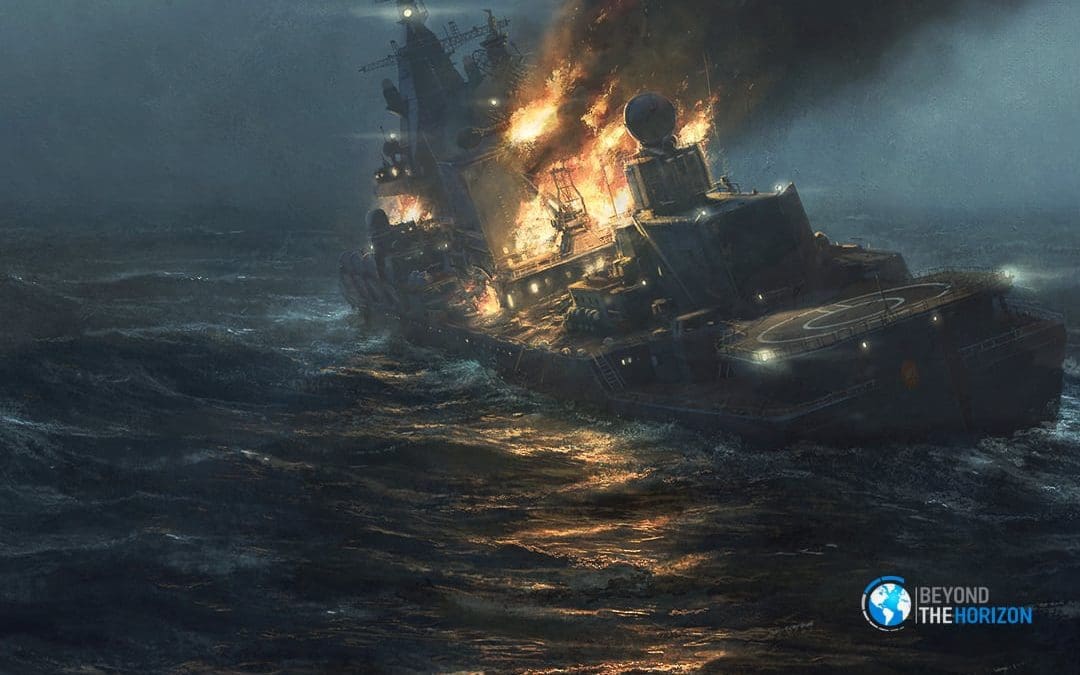1. BACKGROUND
-
- On 13 April, the Ukrainian governor for the Odesa region, Maksym Marchenko, said on his Telegram channel that the Ukrainians had hit the Russian flagship of the Black Sea Fleet Moskva with two Neptune missiles. There have been three previous reports about other warships (Ropucha class Saratov, Patrol boat Vasily Bykov, and frigate Admiral Essen), and only the hit of Saratov was confirmed. Thus, the news about Moskva was received with a grain of salt.
- On 14 April, Pentagon confirmed a blast on Moskva without specifying any reason. Russian MoD rejected Ukrainian claims, asserting the explosion occurred due to a fire reaching to the ship’s arsenals. According to Russian official statement, the crew had put out the fire and evacuated Moskva. Russian media agency TASS reported that the ship sank while the cruiser was being towed towards Odessa.
- On 15 April, a US senior defence official confirmed that Moskva was hit by two R-360 Neptune anti-ship cruise missiles.
- On 18 April, photos and videos of the cruiser showing the extent of the damage started to circulate on social media.
- On 24 April, more than 10 days after the incident, Russia acknowledged that one person was killed, and 27 sailors were missing, contradicting the previous statement that the crew was safely rescued.
2. ANALYSIS OF THE INCIDENT
There are still unknowns about what/how exactly happened, and there is not sufficient concrete evidence yet to make a final verdict. Therefore, the analysis at your hand was made based on the available information and through benchmarking with the standard operating procedures within the context of the Western navies.
2.1. How can you attack Moskva?
Before scrutinising what happened, it is worth briefly explaining how an anti-ship missile works and how a warship defends herself against air threats (anti-air warfare).
Targeting
To be able to hit a warship, you need its location. Without proper targeting, you cannot fire a missile. The million-dollar question is how the Ukrainians pinpointed Moskva. There are two possibilities. The first is the official story that they flew a TB2 to locate and distract the ship. It is not very convincing to buy this argument for the reasons that will be explained in the coming sections. The second possibility is receipt of intel from the West.
This is the first time since the beginning of the #RussiaUkraineWar that we've tracked a USN P-8A over the Black Sea and the first time that we've tracked a #NATO aircraft so close to Russian positions directly involved in the conflict. #Russia #Ukraine https://t.co/udQlm9swDT
— Itamilradar (@ItaMilRadar) April 12, 2022
Itamilradar reported on 12 April that they tracked a USN Boeing P-8A “Poseidon“ mission over the Black Sea for the first time since the start of Russia’s invasion. The aircraft is equipped with AN/APY-10 radar, which has a range of 200 nautical miles. Moreover, it approached 20 km the Snake Island, the closest encounter observed by Itamilradar. According to The Times, the P-8A patrolling the Black Sea on 13 April closed its transponder for three hours. This increases the plausibility of the second scenario.
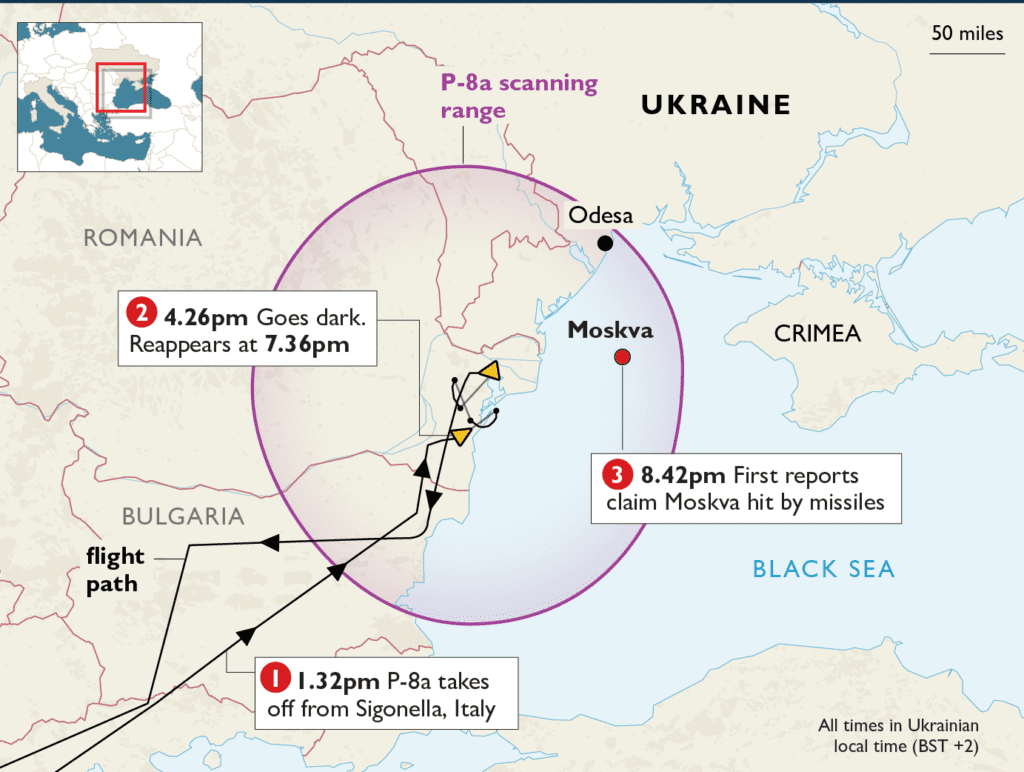
Figure-1: The Flight of P-8A Poseidon, Source: The Times
A Brief Description of How Anti-Ship Missiles Hit
After launching an anti-ship missile, it proceeds to the target ship in low altitudes to avoid detection, known as sea-skimming. The more it gets closer to the ship, the lower the altitude becomes at which the missile flies. In the terminal phase, the last stage of a missile’s flight pattern, the anti-ship missiles with active homing (other types also exist) activate their own radar to seek the ship, and some missiles have the capability to do pop-up and dive manoeuvre to evade ClWS (Close in Defence Systems).
There is little available information about the Neptune missile. According to open-source data, RK-360MC Neptune is a subsonic missile with active radar homing and travels 0.75 mach (900 km per hour), similar to the famous “Harpoon”.[1] Neptune also has a skimming feature and flies 10-15 metres above the water, and it lowers its altitude up to 5-10 metres in the terminal phase. The missile carries 150 kg of explosives. These figures mean that it does not travel fast, which makes its detection easier than supersonic or hypersonic missiles, and it includes a light payload than its counterparts. A high-ranking Russian naval officer confirmed this perception in an interview published four months ago and stated that Russian warships in the Black Sea Fleet have appropriate defensive systems. Therefore, Russia does not have to worry about Neptune missiles.
In naval warfare, you are required to launch several successive missiles (salvos) to sink a ship. The number of missiles needed depends on the ship’s size, her air defence capabilities and the amount of the payload it carries. Of course, it is also related to where the missile hit on the ship. Chance is always a factor. For instance, the missile misses the Moskva’s Sandbox launchers so close. However, according to Cowden’s calculation, the Ukrainians should have launched at least 11 missiles to sink Moskva. It is also an important question why the Ukrainians shot just two missiles. Maybe, they had just two or wanted to keep for the future.
2.2 What capabilities did Moskva have against the incoming missile?
Moskva has the following capabilities[2];
- Two 3D search radars; Voskhod MR-800 (Top Pair) and Fregat MR-710 (Top Steer)
- Eight Fire Control Radars; 1x Argon 1164 (Front Door), 1x 3R41 Volna (Top Dome), 2x 4R33 (Pop Group), 3x MR-123 (Bas Tilt), 1x MR-184 Lev (Kite Screech)
- 64 S-300F Fort (SA-N-6 Grumble) long-range SAMs
- 40 OSA-M (SA-N-4 Gecko) short-range SAM
- 1 × AK-130 gun
- 6x AK-630 CIWS (Close-in-weapons systems)
- Chaff
- Electronic Warfare Systems (Rum Tub and Side Globe EW antennas)
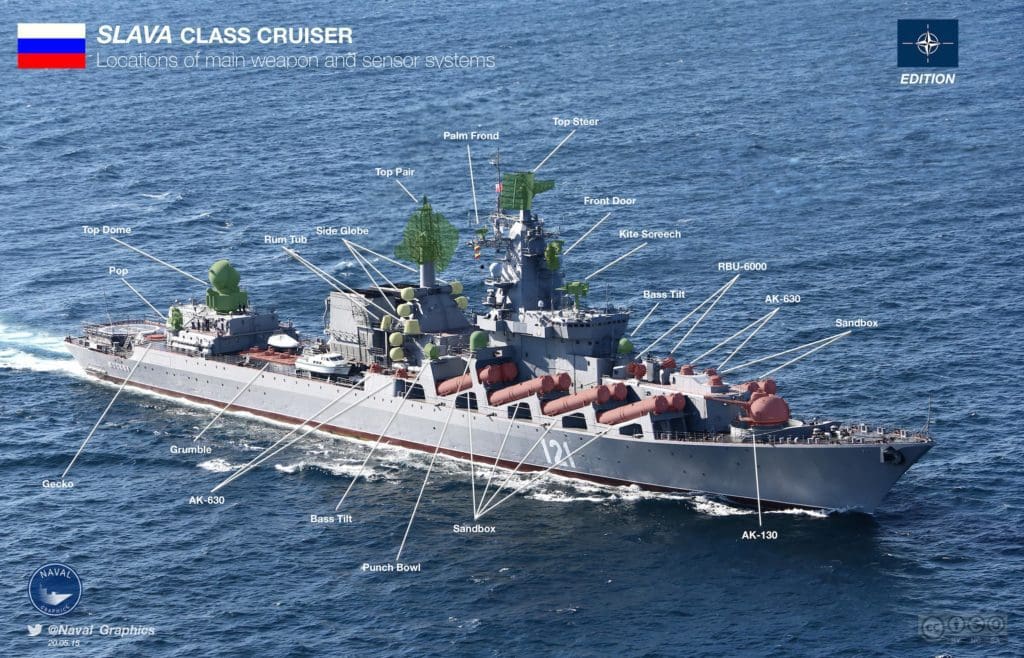
Figure-2: Moskva’s sensors and weapons, Source: Naval Graphics
Warships are designed with a layered defence approach. Multiple radars and weapons are used to protect against threats at different ranges. Search radars scan for contacts in their range, and most modern radars automatically track them, meaning that the radar tracks the path of one or multiple targets. Then, the tracks are identified into categories such as enemy, friend, neutral, warships, merchant vessel, aircraft, or incoming missile. If it is recognised as hostile and the crew decides to engage, the target is tracked by a fire control radar. Then, a warship can engage the enemy unit with multiple weapons depending on its type and range.
If one weapon fails, the next one can take care of the threat. That is why warships have several search and fire control radars with many channels which can be connected to different weapons within those fire control radars enabling the crew to use various weapons, e.g. long-range SAMs (Surface-to-Air-Missiles), short-range SAMs, naval guns.
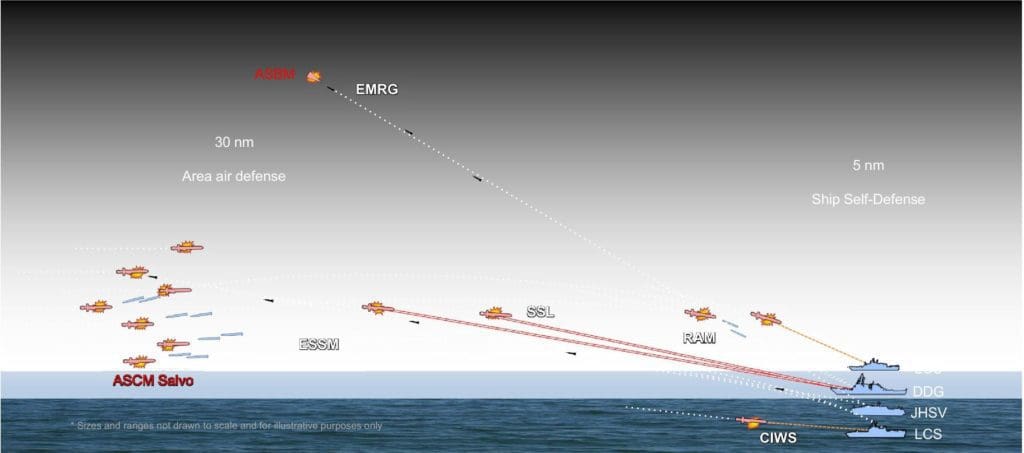
Figure-3: Air Defence by a Warship, Source: CIMSEC
Electronic countermeasures (ECM) can be used in passive mode to identify targets (a missile, helicopter, or fighter jet) according to their specifications (altitude, speed, or electromagnetic spectrum in which a missile’s radar works) or in active mode to conduct jamming. ECM systems have multiple antennas separate from radars providing 360-degree coverage.
EW becomes very important if a warship fails to detect or intercept an incoming missile with search radars. For instance, if a rocket is fired against you, an EW operator can detect it and even designate which missile is coming by comparing the missile’s specifications with ECM’s database. Then, the ship attempts to thwart the missile by employing jamming with ECM and firing CIWS. As a last resort, a warship will launch chaffs to deceive a missile and make a manoeuvre to evade the incoming missile. The drawback of ECM is their shorter ranges than radars, giving the crew a limited time.
If the ship had detected the incoming missiles (there is also an unconfirmed video showing her firing against the missile), she is supposed to engage them with S-300F, OSA-M, AK-130, AK-630s and make an evading manoeuvre by firing chaffs, respectively. Given that, the ship has many alternatives to defend itself and that is why she was assigned to provide air defence to other military assets and ports within her coverage.
This is a highly technical issue concerning anti-Air Warfare. So, suffice it what has been said on this. In the following part, only relevant information to grasp the attack against the Russian cruiser will be given.
3. WHAT COULD HAVE GONE WRONG WITH MOSKVA?
3.1. Technical Reasons
The Neptune is a subsonic missile with a speed of 900km per hour and allegedly launched from 65 nautical miles (120 km) away from the ship. So, the ship had almost 8 minutes to respond to it, and it is not a short period if you are operating under war conditions. If the ship did not fire any missiles and employ countermeasures, we could understand that the crew failed to detect the missiles.
After the sinking of the cruiser, some experts pointed out that the cruiser and systems onboard were almost 40 years old and could be too old to detect Neptune missiles. Of course, having a modern radar will be more helpful to counter threats, yet the Harpoon missile, equivalent to Neptune and used as the main anti-ship missile used in NATO countries, was also developed in the 1970s.
Therefore, Moskva is expected to detect the Neptun considering its specifications, although detecting a sea-skimming anti-ship missile is challenging for navies. It is also necessary to consider the radar signature of the Neptun, but no information exists in the open sources at the time of writing. Even if her search radars failed, ECM operators should have detected the missiles, which would give a chance to Moskva to counter the missiles.
The caveat here is the assumption that the sensors, radars, and weapons are in order and functioning as expected.
3.2. Atmospheric Conditions
Precipitation and waves could have played a role in the failure of detecting the missile as they may have created clutters on the radar scope that complicated distinguishing real tracks from the errors. CNN reported that they could not verify the ship was hit because of the storms over the Black obscuring satellite imagery and sensory satellite data. Clouds do not necessarily obscure radars, but they may indicate a high wind speed increasing wave height (a problem in detecting a sea-skimming missile) and probability of precipitation.
When checking the historical weather data, the weather fluctuated on 13 April. The exact time the Ukrainians attacked the Russian ship is not yet precise. However, “rumours” started to circulate on social media, hinting at 21:19 LT in Ukraine. We can surmise that the attack took place before 21:00 LT.
There are different data about wind on 13 April (Windguru (3 kts), Windy (10 kts), World Weather Online (15 kts)), and all of them show almost no rain but a massive cloud coverage in the evening. Visual crosser data shows a wind of 20 kts and drizzle (0.3) in the evening, coinciding with the probable hours of the strike against Moskva. The distance between the warship and the coast where the stations are based is a caveat in this data.
If we put the maximum wind speed into the Beaufort Scale, the wave height should be 2.5 meters at maximum. This will affect radar, but it is hard to accept that Moskva failed to detect the missile due to this weather.
3.3. What is the Impact of Crew on the Incident?
Having a skilled crew and efficient organisation among them are crucial in warfighting. There are reports claiming Russian forces assigned conscripts to the Russian warships. Yet, it is implausible that they are tasked with a critical technical role since radar/weapon operators are generally skilled and experienced senior staff. The extended deployment period and low morale could also make the crew exhausted, and their training level is also another issue we cannot know.
Can these issues have an impact on the performance of the warship? It does but is not substantial for the detection and interception of the missile. However, its effects on Damage Control efforts can be profound, as explained in the next section.
3.4. The Role of TB-2 in the Attack
The Ukrainians claim that they distracted the cruiser with a TB2 drone and hit Moskva with two cruise missiles. This story does not seem plausible.
You cannot distract a warship with a drone since many eyes follow the tracks on different radars and consoles. Besides, there are supervisors who follow the big picture and communicate with the operators. For the ship to be distracted by only one drone, the entire CIC (Combat Information Centre, seen as the brain of a warship) should be sleeping. Therefore, from a naval warfare perspective, distracting a warship with a drone is nearly impossible.
TB2 has a small radar signature complicating its detection by radars on the warship. We also know that it successfully penetrated Russian defence systems on other battlefields. However, if TB2 played a role in such a distraction, Moskva should have been aware of it. In this case, the question should be why the ship did not engage it. Did not they care about an armed drone operating in their vicinity? Highly unlikely.
Another possibility is that the warship detected the drone but failed to hit it. In this case, the Ukrainians would publish camera/radar records from the drone. As a result, TB2 could have helped them find the ship at best.
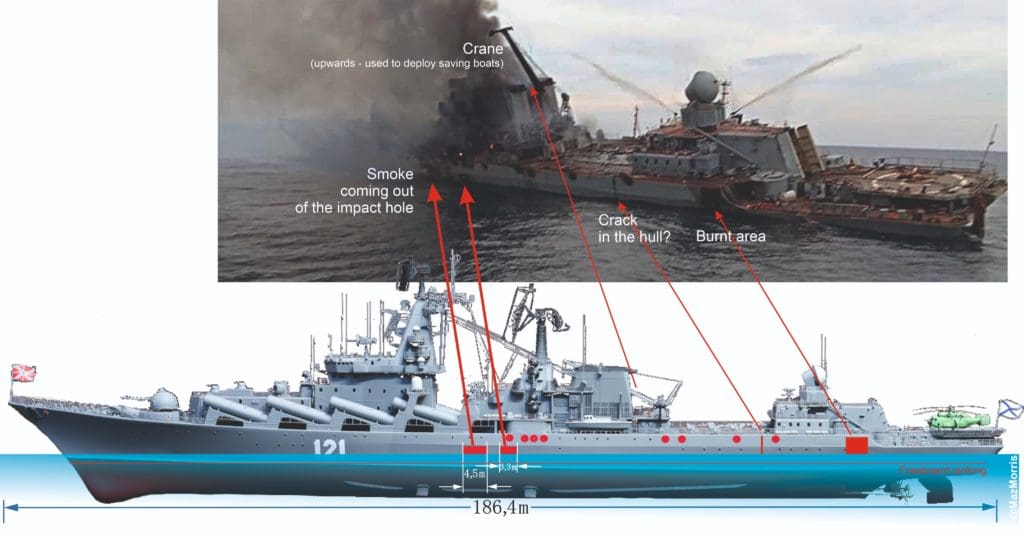
Figure-4: The damage on Moskva, Source: MazMorris on Twitter
4. THE SINKING OF MOSKVA: FAILURE ON DAMAGE CONTROL
According to the statement of the Russian MoD, the crew abandoned the ship, which is a rare and extreme situation and possibly means that the damage control efforts failed, unlike Russia claimed. In general, warships have two or three damage control parties (forward, amidship, aft), and each of them has firefighting and repair teams so that the crew can handle multiple fires and damages concurrently.
Arsenals are generally kept in highly protected compartments on warships, and it is challenging for a fire to spread to a magazine onboard. According to the experts, fire detection and extinguishing systems are outdated in the old ships designed in the 1980s. Hence, Russians were already afraid of a possible fire. Moreover, Russian warships have also poor compartmentalisation making it challenging to contain leakages after damage.
Otherwise, why did the crew abandon Moskva if the fire was under control, damages were repaired, and the ship could float? Even if a missile hits the bridge, warships have several emergency systems to sail them in critical times. For instance, when the bridge is damaged, the ship can be sailed by using alternative systems, e.g., electronic, hydraulic, or manual, to command the rudder and engines from different places. Engines are also put into various parts of the ships to avoid being out of operation. Hence, she must have suffered substantial damage, or the crew was unskilful to abandon the ship and her being towed by another vessel.
Russian MoD blames the “stormy seas” for her sinking en route to Sevastopol, but the weather tells a different story. The wind was four miles per hour,” and the sea state was very calm at the mentioned time. It can be a balance problem if the ship is flooded from fractures, but it stems from the crew’s inability to recover the ship.
5. IMPLICATIONS OF MOSKVA’S LOSS FOR RUSSIA
Moskva’s loss is a severe psychological and operational blow for Russia since she became the first destroyed warship of its size in 40 years, costing Russia $750 million. Warships are seen as a source of national pride. Losing the flagship is a huge humiliation for a great power like Russia. Moreover, its intelligence failed to learn that Ukraine had developed an anti-ship missile capability. Moskva sailed closely to the shore within the range of a possible attack even though she had no role close to the coast. These issues depict that the Russian Navy has serious flaws in warship design, modernisation, crew training, and operation planning.
There is no warship with the same air defence capabilities in the Black Sea concerning the naval operations. Flagships are floating headquarters. Therefore, the Russian Navy lost a flagship with command-and-control capabilities at sea. Considering the closure of the Turkish Straits, Russia cannot reinforce its task force in the Black Sea from the Mediterranean Sea.
Third, the Russian Navy carried out amphibious demonstrations in the Black Sea, which aimed to distract Ukraine’s energy and forces even though a landing was a remote possibility. Russia already lost a landing ship in Berdyansk, and the loss of Moskva makes an amphibious operation almost impossible. The Black Sea Fleet will probably operate in a defensive posture to avoid another strike.
6. LESSONS TO ALL NAVIES
The sinking of Moskva has several lessons for World Navies. First, a fire onboard has been a nightmare for ships. Navies put a lot of effort into avoiding fire and minimising its impact. What is more important is to have a well-trained crew to carry out successful damage control and keep the ship afloat.
Second, A2AD is a real threat to warships. Comparing the Russian Navy with the American Navy, which has long been thinking about addressing A2AD, is not appropriate. Yet, the Western navies should be adequately prepared against Russia’s build-up in the Eastern Mediterranean and Chinese capabilities in the South China Sea.
Third, the regional security in the Black Sea is fiercely discussed in the heat of the Russian invasion. Montreux Convention imposes restraints on the naval operations in the region. NATO can help its littoral members and allies in the region by deploying robust and deterrent A2AD capabilities to address security concerns.
Featured Image Credit: RadoJavor
[1] Missile speed is measured with mach. 1 mach is equals to 1200km per hour. For a comparison, RGM-84 Harpoon travels with 0,85 mach and has a payload of 224 kg, CSIS
[2] To provide a simpler picture, only relevant sensors and weapons are listed here.

